
Top 10 Generative AI Trends To Look Out for in 2024
by Oliver Goodwin | October 20, 2023
Reading Time: 10 minutes

If you are reading this, chances are you have heard of artificial intelligence (AI). In its simplest form, AI can be defined as the branch of computer science that simulates human intelligence in machines using vast datasets to perform or simplify tasks associated with humans.
The bulk of the features that you use today via mobile phones and computers are products of AI. Things that seem like magic, such as entering a series of sums on Microsoft Excel to predict the outcome and asking Apple’s Siri to play you a song, all stem from the inner workings of AI.
However, the goal of this article requires that we tell apart the two types of AI that we have today, which are:
- Analytical AI: This is traditional AI, which takes existing data, analyzes it, and uses the results of analysis to predict or automate. It is mostly deployed in fraud detection, customer behavior prediction, product recommendations based on customer preferences, etc.
- Generative AI: A more recent variant of AI that takes data, learns from it, and generates new data, such as text, images, video, audio, etc.
Our focus here is Generative AI, so let us ease right into it. As you read on, you will learn more about:
- What is Generative AI, and how does it work?
- A brief history of Generative AI.
- Why Generative AI is the next big thing.
- Top ten Generative AI trends to look out for in 2024.
What is Generative AI, and How Does It Work?

Looking around closely, you will discover that you are mostly surrounded by assistive technologies. With a text prompt entered into ChatGPT, you can generate text results and engage in conversations with a machine. Similarly, using text-to-speech technology, you can make machines say what you write in whichever form and language you choose—a good example of this application is our own Synthesys Studio’s AI Voice Generator.
In a nutshell, Generative AI is the type of AI that generates entirely new data, such as text, image, video, audio, code, animation, 3D models, etc., by learning from existing data.
How does it work? It operates through deep learning techniques, particularly using a type of neural network known as a transformer architecture. It is trained on extensive datasets and relies on self-attention mechanisms to learn contextual information. In text generation, for example, it utilizes probabilistic language models to predict the most likely words or phrases to follow a given input. The model fine-tunes its weights through techniques like backpropagation and gradient descent.
By leveraging robust datasets and complex neural network structures, Generative AI can capture intricate language patterns, producing coherent and contextually relevant responses conversationally. This results in its human-like text generation capabilities.
A Brief History of Generative AI
Generative AI may appear to be a recent development owing to its remarkable strides and the rapid evolutionary processes it has undergone in recent years. However, it is not as recent as the headlines you see suggest.
Generative AI has a rich history dating back to the 1950s when computer scientist Alan Turing proposed the concept of machines simulating human intelligence. Early attempts, like the 1960s ELIZA chatbot, laid the foundation for natural language processing.
The 21st century brought progress with recurrent neural networks (RNNs) and, later, transformer-based models like GPT. OpenAI’s GPT-3, launched in 2020, marked a significant breakthrough with its massive dataset and massive neural network, enabling remarkably human-like text generation.
Generative AI continues to evolve, driving innovations in chatbots, content generation, and creative applications across various fields, promising exciting possibilities for the future.
Why Generative AI Is the Next Big Thing
Generative AI transcends being a buzzword that is being passed around today. When viewed through broader lenses, it is one of the core technological advancements upon which the world’s diverse industries base their productivity.
Consider this chart by McKinsey that shows the different impact levels that Generative AI will have on different business functions across various fields:
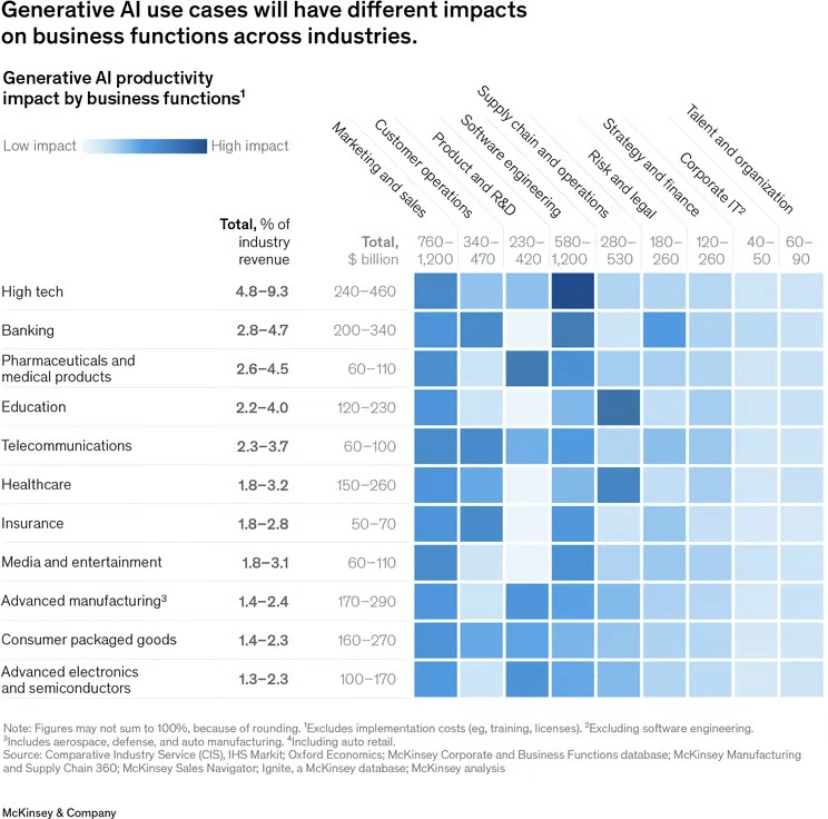
Source: McKinsey
Beyond the functional ease, Generative AI has been predicted to shoulder substantial global economic responsibility. McKinsey identified 63 Generative AI use cases across 16 business functions and inferred that the technology is capable of delivering $2.6 trillion to $4.4 trillion annually, spanning several industries.
Top Ten Generative AI Trends To Look Out for in 2024
As we closely approach 2024, let us delve into the prominent trends that the realm of Generative AI has in store for us. These trends have the potential to reshape various industries on a global scale. The future is AI, and a key representation of this future is Generative AI, particularly when we mention productivity.
We have seen a glimpse into how big of a deal Generative AI is, but what exactly makes up the success path? What are the trends that we have to keep an eye on as the revolution continues to swirl? Let us see:
1. Evolution in Image Generation
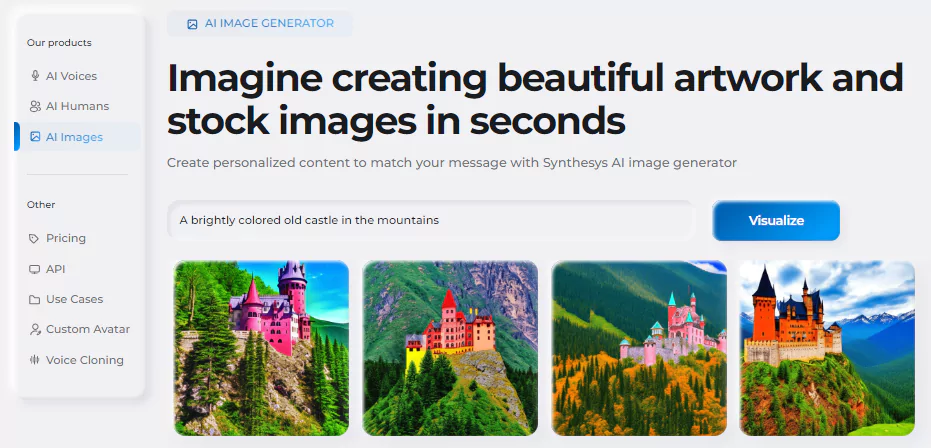
The landscape of image generation is on the cusp of a significant evolution. The AI models responsible for producing captivating images, such as DALL-E 2 and Imagen, are about to take a giant leap forward.
These models will soon be able to consider many parameters, resulting in the creation of remarkably photorealistic images that seamlessly incorporate multiple concepts. Consider Synthesys Studio’s text-to-image AI generator an excellent example of how you can achieve photorealism with a text prompt.
Furthermore, the applications of image-generating AI models are poised to extend beyond the realm of content creation. These AI startups, for instance, can combine the power of Generative AI models and blockchain to craft interactive AI characters, which can then be traded as non-fungible tokens NFTs, ushering in a new era of digital art and collectibles.
2. Speech Synthesis Advancements
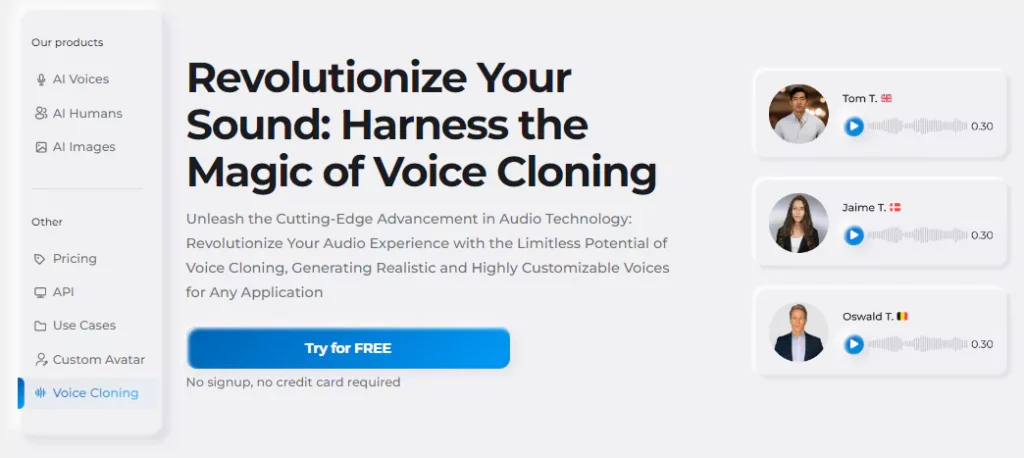
Expect remarkable advancements in the realm of text-to-speech technology. This technology is on the verge of becoming more multilingual and realistic, catering to a wide range of applications.
AI will mimic character voices, enabling the production of highly nuanced speech synthesis for a broad range of applications, such as audiobooks, podcasts, and educational materials. Imagine generating voices that sound exactly like you for your audiobooks or telling stories to your loved ones. Imagine being able to clone the voice of your absent loved ones and relive their presence even when they are not with you.
But the good news is, you need not imagine because Synthesys Studio offers this magic and more. Synthesys offers customizable, lifelike AI voices that are scalable and can take on the required emotions for your message to be passed.
The future holds the promise of voice cloning that can understand complex instructions and deliver emotionally nuanced variations, opening exciting possibilities for content creation.
3. Rise of Multi-Modal Models
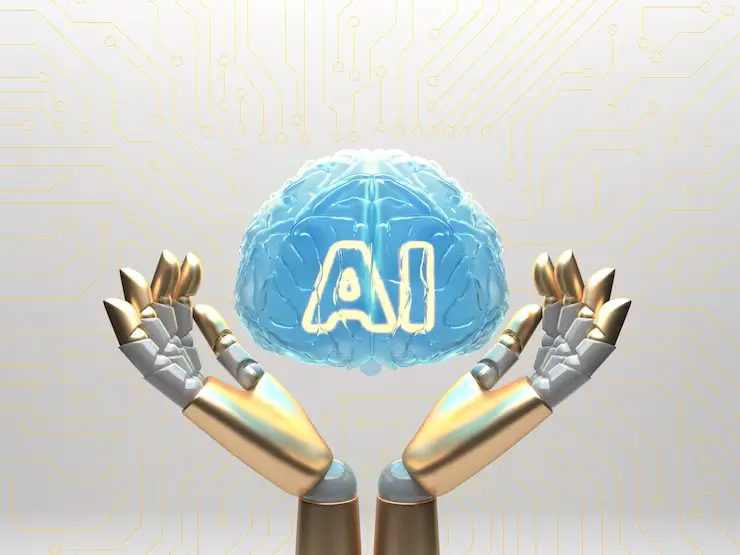
Many Generative AI models currently can simulate a single mode of expression, such as language, visuals, or sounds. For instance, OpenAI’s ChatGPT can only take input and return text. However, 2024 will usher in a new shift.
The future versions of models like ChatGPT are expected to exhibit the ability to understand and interpret images, respond to voice commands, and engage in complex conversations. This evolution reflects a more holistic understanding of human communication and interaction.
The transition to multi-modal Generative AI will enable you to interact seamlessly with AI across various modes of communication. This means that you can engage with AI using text, voice, and visual inputs, making interactions with AI more versatile and natural.
The development of multi-modal AI models will significantly broaden the applications of AI and enhance the user experience in various domains, from customer service to content creation.
4. Generative AI Music
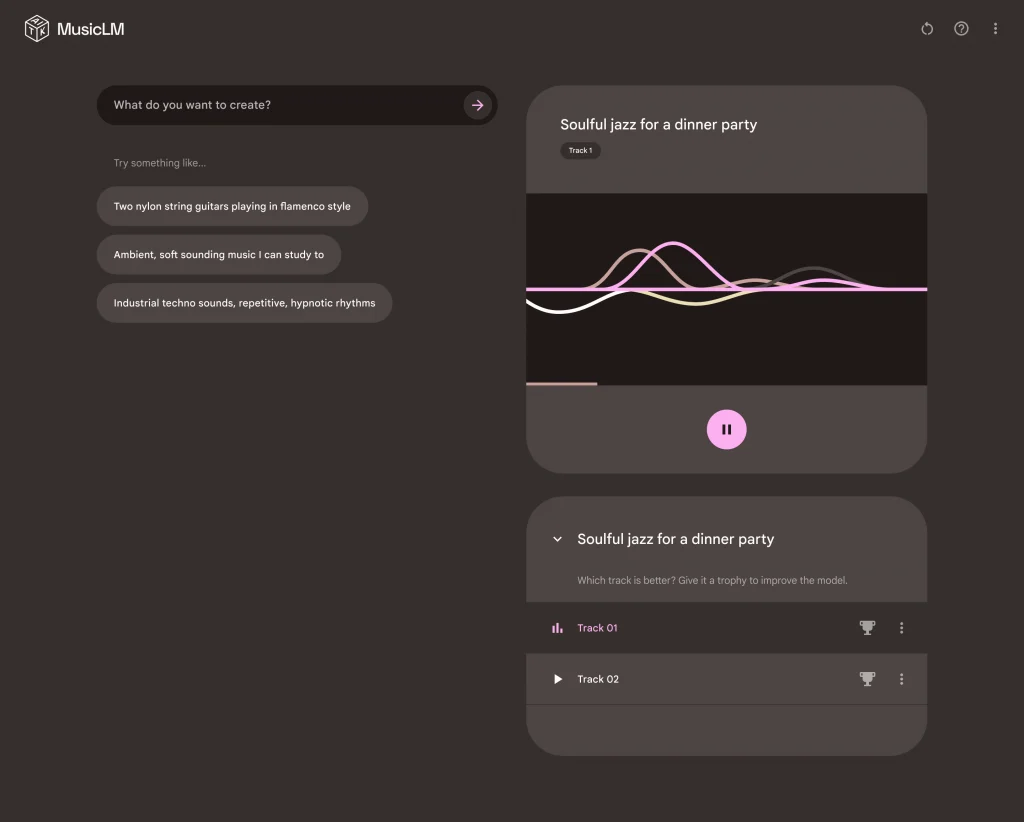
In January, Google introduced MusicLM, a tool that could create music from text descriptions. This development would go on to birth advancements in this new technology.
Today, tools like AudioCraft and Veed have built upon that development and can be used to generate music.
Generative AI is set to make its mark in the world of music—better than what we have experienced so far this year. This technology will not only streamline music mixing and mastering but will also be capable of producing original compositions based on user prompts. Perhaps most intriguing is that these generative musical pieces will be copyright-free, opening up exciting possibilities for artists and content creators.
5. Comprehensive Video Production
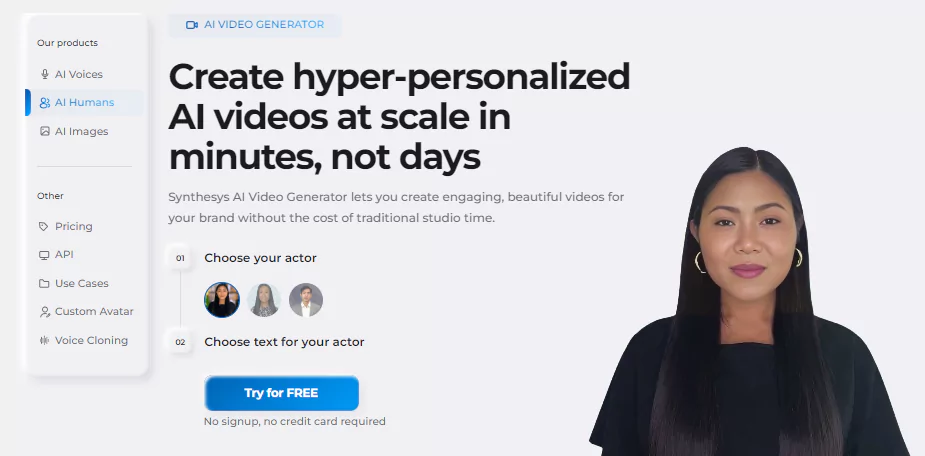
The video production industry is on the brink of a major transformation as Generative AI takes the lead. From creating virtual environments to producing character animations and special effects, AI is about to revolutionize how videos are produced.
A notable player in this field is Synthesys. We have harnessed the power of text-to-video generation, eliminating the need for actors and expensive equipment. Offering a palette of 74 realistic avatars in an impressive 300+ unique speaking styles, Synthesys Studio holds the potential to reshape various sectors, from marketing to eLearning, with a process as uncomplicated as can be completed within ten minutes.
6. Generative AI Design
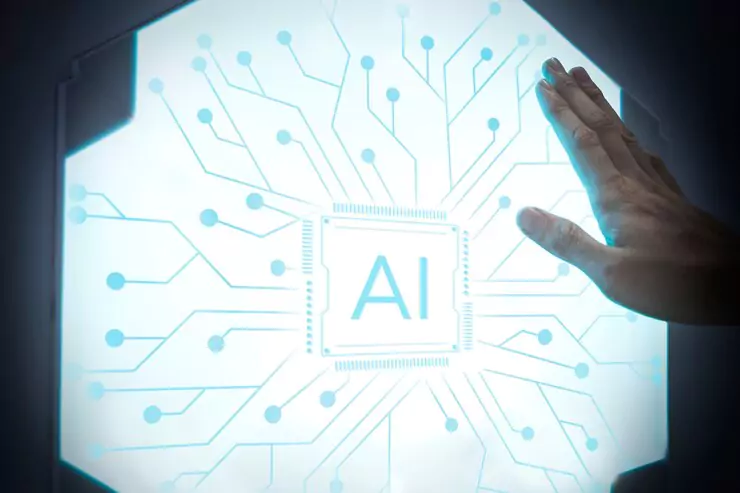
As we advance across time, another key area in which we will witness the rapid growth of Generative AI is the realm of design, including the design of products and architectural design.
Generative design tools like Autodesk empower designers to submit requirements and specifications and be given scaled-up designs and blueprints.
Designers will harness Generative AI to expedite the development of products and services, leveraging technology to create more effective and sustainable designs. This marks a significant shift in how design approaches, promising innovative solutions that can reshape entire industries.
7. Improved Cybersecurity

One of the most noticeable Generative AI trends is how we use AI to make our digital world safer. Think of it like a smart security guard for your computer. AI, with the help of language understanding, can assist even those who are not tech experts in dealing with complex computer code, similar to how easy-to-use tools have become popular.
These AI applications do not stop at just helping with code; they also keep a close eye on your software to find and fix security problems. They are like detectives analyzing all sorts of information to predict and prevent cyber threats.
This means that AI is becoming our digital protector, making the online world safer.
8. Generative AI in Education
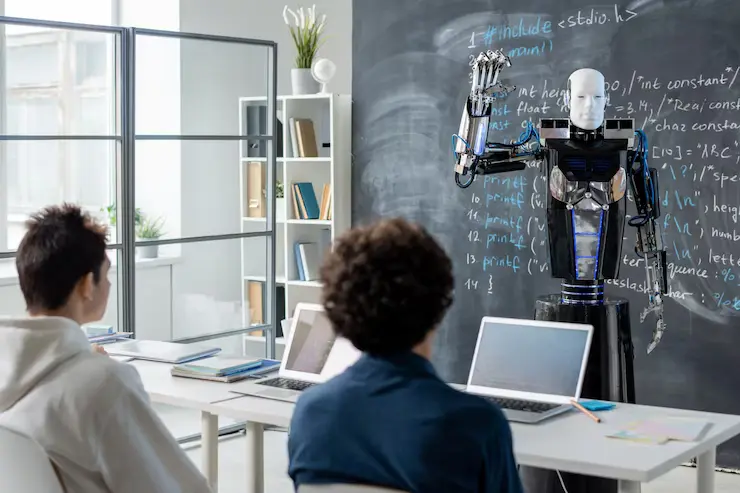
There is a buzz about integrating AI into schools, much like when computers were first introduced. Some people might have concerns about students relying too much on AI. However, similar debates have happened, such as when calculators entered classrooms. Surprisingly, technology often enhances our abilities.
Teachers are expected to use AI to generate study materials, lesson plans, and course summaries. This will make learning more efficient and comprehensive. For instance, AI can create customized learning materials based on students’ needs, making education more tailored.
So, while questions arise, the goal is to use AI to improve education and meet individual students’ needs.
9. Autonomous Generative AI

Moving forward, we will witness the ascent of Autonomous Generative AI, a breed of self-operating digital workers. These intelligent AI agents are not passive; they continuously create and respond to prompts, performing tasks of increasing complexity.
An illustration from 2023 is BabyAGI, an example of an Autonomous Agent. It is expected that in 2024, significant advancements will be made. AI engineers strive to attain generalized AI, capable of undertaking a wide array of tasks with little human supervision. The aim is to cultivate adaptable and self-sufficient AI, leading to remarkable enhancement.
10. Innovations in Scientific Discovery

Looking forward, a captivating trend in Generative AI involves its profound impact on scientific research. Large language models (LLMs) are proving to be invaluable tools, enabling the generation of fresh hypotheses across a multitude of scientific domains. Moreover, they excel in constructing precise data models beneficial to fields like astronomy and chemistry.
The potential of Generative AI extends across the spectrum of scientific pursuits, from aiding in drug discovery and material science to enhancing environmental monitoring, aerospace engineering, and energy research. These advancements are propelling the boundaries of scientific exploration and innovation.
Frequently Asked Questions (FAQs)
What exactly is Generative AI, and how does it function?
Generative AI is a subset of artificial intelligence (AI) that focuses on generating new data by learning from existing data, including text, images, videos, and more.
It uses deep learning techniques, particularly neural networks like transformer architectures. These models are trained on extensive datasets and use self-attention mechanisms to understand context.
What is the history behind Generative AI?
Generative AI has a history dating back to the 1950s when the concept of machines simulating human intelligence was first proposed.
Over the years, it has evolved, with significant advancements in the 21st century, particularly with the advent of transformer-based models like GPT-3. OpenAI’s GPT-3, launched in 2020, marked a turning point with its massive dataset and large neural network, leading to remarkably human-like text generation.
Why is Generative AI considered the next big thing?
Generative AI is not just a buzzword but a core technological advancement that various industries rely on for productivity. It is estimated to contribute trillions of dollars to the global economy annually, impacting multiple business functions and industries.
With its ability to generate new data and automate tasks, it holds the potential to revolutionize numerous sectors, making it a key player in the future of technology.
What are the top trends to look out for in Generative AI in 2024?
Several exciting trends are emerging in the field of Generative AI. These include the evolution of image generation, advancements in speech synthesis, the rise of multi-modal models, Generative AI music, comprehensive video production, Generative AI design, improved cybersecurity, Generative AI in education, the emergence of Autonomous Generative AI, and innovations in scientific discovery.
These trends promise to reshape various industries and offer new possibilities in the world of AI.
Final Thoughts
Generative AI is transforming the world as we know it, offering innovative solutions to age-old challenges. As we journey towards 2024 and visit newer years, these emerging trends in Generative AI promise to reshape multiple industries, creating a more versatile and efficient world. The potential is vast, from image generation to music composition and multi-modal models to advancements in education.
One of the key players driving these advancements is Synthesys Studio, an AI innovation that’s already making waves. Its text-to-image and voice cloning capabilities are at the forefront of shaping the creative landscape and how we interact with technology.
The future belongs to Generative AI, and it is not just a catchphrase; it is the path to a better world for everyone.




